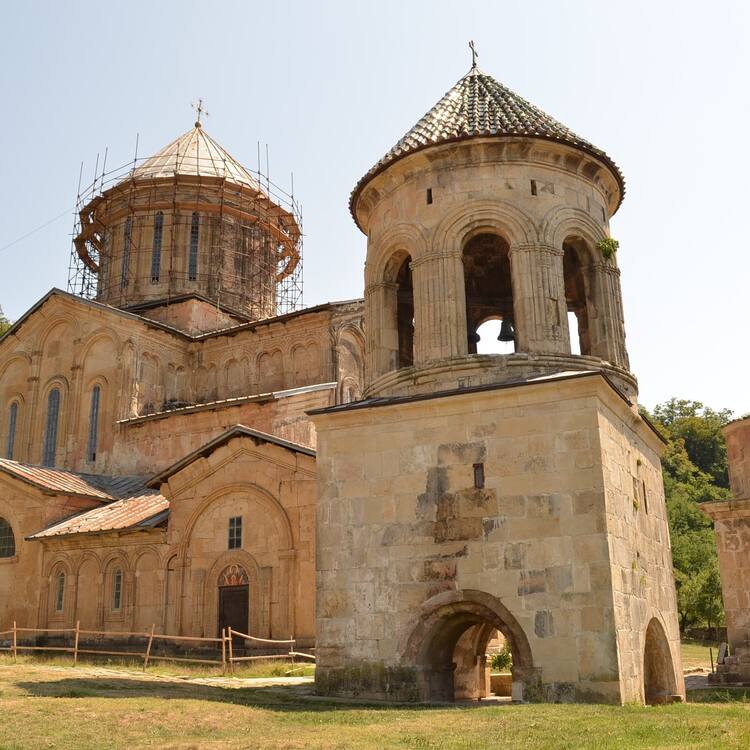Gelati Monastery: An Enchanting World Heritage Site
When you think of a monastic retreat, you may think of a peaceful and tranquil place. But the Gelati Monastery in Georgia is anything but quiet. This remarkable 12th century World Heritage Site is filled with stunning architecture, vibrant history, and colorful art.
Located in the Imereti region of western Georgia, the Gelati Monastery is a spectacular example of medieval Georgian architecture. Founded in 1106 by King David IV “the Builder,” the monastery is a living piece of history. Its imposing bell tower, domed churches, frescoed walls, and gilded iconostasis have attracted visitors from all over the world for centuries.
History of the Gelati Monastery
The Gelati Monastery is an important part of Georgian heritage. During its heyday in the 12th and 13th centuries, it was a major center of learning and culture. It was home to an academy of philosophy and sciences, which attracted some of the brightest minds of the age. The monastery was also the seat of the Gelati dynasty, whose members were major patrons of the arts.
In addition to its impressive educational and cultural achievements, the monastery also played a significant role in the defense of the region. Its walls and towers served as a refuge for the local population during times of war.
Today, the monastery is a popular tourist attraction. Visitors can explore its medieval churches, wander through its lush gardens, and view the breathtaking frescoes inside the Cathedral of the Virgin.
Gelati Monastery – A Cultural Treasure
The Gelati Monastery is an architectural and cultural treasure. Its beautiful frescoes, ornate carvings, and colorful icons are a testament to the talent and skill of the medieval artisans who created them. The monastery also includes an impressive library, which houses some of the earliest manuscripts written in Georgian.
The Gelati Monastery is also home to some of the most important religious artifacts in Georgia. These include the relics of St. George, the patron saint of Georgia, and the Iberian Gospel, which is believed to be the oldest surviving Georgian manuscript.
Visiting the Gelati Monastery
The Gelati Monastery is open to visitors year-round. There is an entrance fee, which is used to preserve and maintain the site. The monastery can be reached by car, bus, or train, and there is a small shop where visitors can purchase souvenirs and refreshments.
The monastery is open from 9am to 5pm, although visitors should note that some of the churches may be closed during religious ceremonies. There are also strict rules regarding photography and video recording, so be sure to check with the staff before taking photos.
Conclusion
The Gelati Monastery is a remarkable example of medieval Georgian architecture. Its stunning frescoes, ornate carvings, and vibrant history make it a must-visit destination for anyone interested in the culture and heritage of Georgia. Whether you’re looking for a peaceful retreat or a fascinating glimpse into the past, the Gelati Monastery is sure to leave you spellbound.

